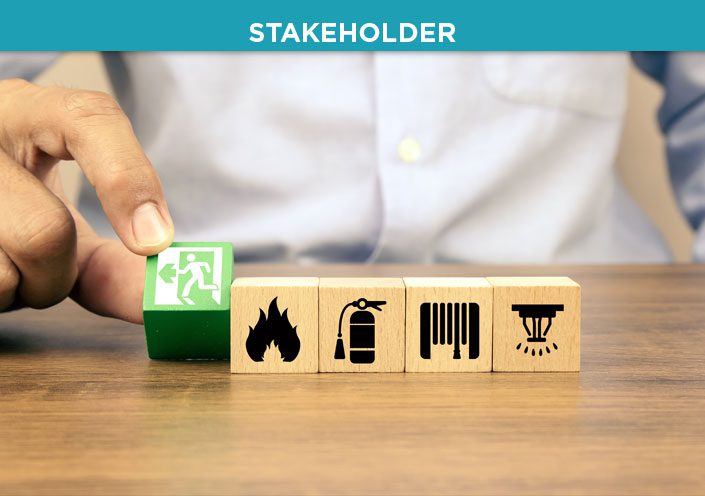
Moving into the second half of 2023, it is crucial not to lose sight of the fundamentals regarding safety within our homes. In this article, Tony Boyle, National Sales manager at Aico, takes a look at how meeting the minimum recommended standards concerning domestic fire safety can make all the difference
Have we lost sight of one of the basics when it comes to not only compliance but improving the safety of others?
Throughout the years, many notable topics came to the fore within social housing and moving into the second half of 2023, it is crucial not to lose sight of the fundamentals regarding safety within our homes, including fire safety.
In rented domestic premises, it is recommended that a category LD2 fire detection system is installed within the residence.
A Category LD2 system, as defined by BS5839-6 2019, means that mains-powered alarms with a sealed tamperproof battery backup should be installed in the living areas and escape routes, with a heat alarm in the kitchen and all alarms should be interlinked.
According to government data, there are 4.4 million socially rented homes in England as of January 2023, and just as many are of privately rented tenure, with 24.7 million domestic dwellings in total.
How many of these properties meet the minimum recommended standards concerning domestic fire safety? Not as many as we might think.
Statistics show the extent of work that still needs to be done within social housing in England; data indicates that 69% of registered providers, as of January 2023, are currently working towards achieving category LD2 in their housing stock which equates to roughly 3.4 million homes, leaving a considerable shortfall in the social sector.
Why is there still resistance to following a British Standard? Registered providers face several challenges when it comes to achieving compliance.
“Protecting the lives of residents and enabling people to escape safely in the event of a fire cannot be understated”
Some of these include; a lack of strategic direction for compliance management and poor asset intelligence that leads to further issues when it comes to hitting KPIs.
Keeping abreast of ever-evolving legislation and the financial strain of achieving LD2 is often a reason providers may be hesitant when it comes to implementing a program of works or accelerating an existing program.
There must be a balancing act when working towards LD2 and all other performance-related areas registered providers are measured on.
North of the border, the impact of legislation has been evident. Moving to a category LD2 is mandatory across all homes, not just social housing.
The law saw all registered providers move to complete LD2 across their stock by February 2022, giving them just a few years from inception to a deadline whilst still meeting all other key performance areas.
Research carried out by the Centre for Economics and Business Research indicates some key findings below:
- Changes to the laws in Scotland have led to a downward trend of fire instances over the last few years and, most importantly, a reduction in fire fatalities of 47.5% between 2019 and 2020
- The cost of each fire has been reduced by 41.5% in Scotland, compared with 23.2% and 24.4% in England and Wales, respectively
- Those individuals classed as being lower-income are a staggering 60% more likely than those in higher-income groups to face serious fire hazards in their homes. Of those individuals who’ve experienced a fire, 18.7% have reported subsequent psychological trauma. This represents an estimated 957,000 adults
Is this basic legislative standard adopted in Scotland, one England should be looking to emulate?
Scotland has shown that it is achievable with limited resources, so why couldn’t England? Given some of the data coming from Scotland, there is a compelling argument for it.
Protecting the lives of residents and enabling people to escape safely in the event of a fire cannot be understated.
Registered providers have a moral obligation to ensure that homes are safe and fit for purpose, and the simple route to this is to comply with current British Standards.
Legislation that reflects these standards is perhaps now on the horizon in England, which may apply to all homes, not just the socially rented sector. Such changes would be a step in the right direction when it comes to making our homes safer.
Housing Digital Stakeholder Aico are the European leader in home life safety, pioneering new technologies and offering high quality alarms, developed and manufactured in Ireland.
Image: Eakrin Rasadonyindee – Shutterstock
Read next: Aico launches new multi-sensor fire and carbon monoxide alarm
Are you a social housing professional? Sign up for a FREE MEMBERSHIP to upload news stories, post job vacancies, and connect with colleagues on our secure social feed.



